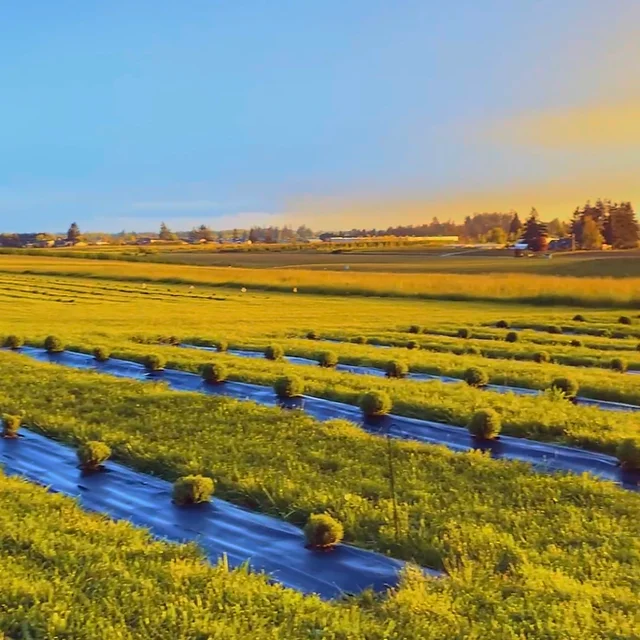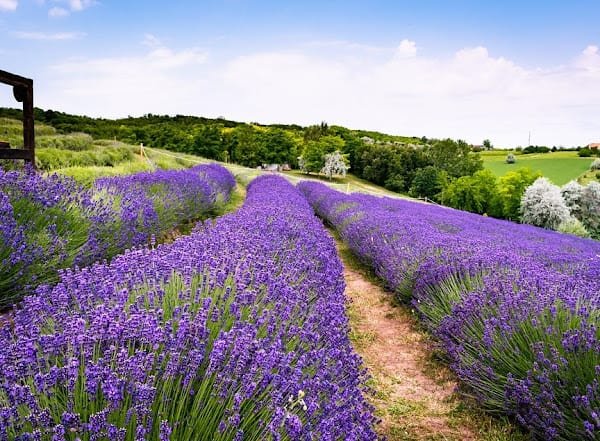How to Start a Lavender Farm? To start a lavender farm, select a well-drained sunny location, prepare the soil with good drainage, choose the appropriate lavender varieties for your climate, plant the lavender in rows or beds, provide regular irrigation, and harvest the flowers when they are in full bloom for various uses such as essential oils, dried bouquets, or culinary applications.
Fields of Purple: Everything You Need to Know About Starting a Lavender Farm
Lavender farming has gained popularity in recent years due to its beauty, versatility, and numerous benefits. Lavender is a fragrant herb that is known for its calming properties and vibrant purple flowers. It is commonly used in aromatherapy, skincare products, and culinary dishes. In addition to its therapeutic uses, lavender farming can also be a profitable business venture.
This blog post will cover various aspects of lavender farming, including choosing the right location for your farm, essential equipment and tools needed, soil preparation and planting techniques, irrigation and fertilization methods, pest and disease prevention, harvesting and drying techniques, market potential for lavender products, marketing strategies for your lavender farm business, legal and regulatory considerations, and tips for success in lavender farming.
Choosing the Right Location for Your Lavender Farm
When it comes to lavender farming, choosing the right location is crucial for the success of your farm. Lavender thrives in Mediterranean climates with mild winters and hot summers. It requires full sun exposure and well-drained soil. The ideal soil pH for lavender is between 6.5 and 7.5.
When choosing a location for your lavender farm, consider factors such as climate, soil type, access to water sources, and proximity to markets. Look for areas with low humidity and minimal rainfall during the growing season. Consider the slope of the land to ensure proper drainage. It is also important to research local zoning regulations and any restrictions on agricultural activities.
To find the perfect spot for your lavender farm, consult with local agricultural extension offices or experienced lavender farmers in your area. They can provide valuable insights into the specific requirements of lavender farming in your region.
Essential Equipment and Tools for Lavender Farming
To start a successful lavender farm, you will need a few essential equipment and tools. These include:
1. Tractor: A tractor is essential for various tasks on the farm, such as plowing, tilling, and mowing. Choose a tractor that is suitable for the size of your farm and has the necessary attachments for different tasks.
2. Tiller: A tiller is used to prepare the soil for planting. It helps break up compacted soil and remove weeds. Choose a tiller that is appropriate for the size of your farm and the type of soil you have.
3. Pruning Shears: Pruning shears are used to trim lavender plants and remove dead or damaged branches. Choose a pair of shears that are sharp and comfortable to use.
4. Harvesting Tools: Harvesting lavender requires specific tools, such as sickles or pruning shears with long handles. These tools allow you to cut the lavender stems without damaging the plant.
5. Drying Racks: Drying racks are used to dry harvested lavender. They provide proper air circulation and prevent mold or mildew growth. Choose racks that are sturdy and can hold a large quantity of lavender.
Soil Preparation and Planting Techniques for Lavender
Proper soil preparation is essential for the success of your lavender farm. Lavender prefers well-drained soil with good fertility. Before planting lavender, it is important to test your soil to determine its pH level and nutrient content.
To prepare the soil for lavender farming, start by removing any weeds or grass from the planting area. Till the soil to a depth of 8-12 inches to loosen it and improve drainage. Incorporate organic matter, such as compost or well-rotted manure, to improve soil fertility.
When planting lavender, space the plants at least 2-3 feet apart to allow for proper air circulation and prevent disease. Dig a hole slightly larger than the root ball of the plant and place it in the hole, making sure that the crown of the plant is level with the soil surface. Backfill the hole with soil and gently firm it around the plant.
Irrigation and Fertilization for Optimal Lavender Growth
Proper irrigation and fertilization are crucial for the optimal growth of lavender. Lavender plants require regular watering, especially during the first year of establishment. However, overwatering can lead to root rot and other diseases.
To irrigate lavender, use a drip irrigation system or soaker hoses to deliver water directly to the roots. This helps conserve water and prevents wet foliage, which can lead to disease. Water deeply but infrequently, allowing the soil to dry out between waterings.
Fertilization is also important for lavender farming. Lavender plants have low nutrient requirements, but they benefit from a balanced fertilizer with a ratio of 10-10-10 or similar. Apply fertilizer in early spring before new growth appears and again in late summer or early fall.
Pests and Diseases to Watch Out for in Lavender Farming
While lavender is generally a hardy plant, it is susceptible to certain pests and diseases. Common pests that affect lavender include aphids, spider mites, and thrips. These pests can cause damage to the foliage and flowers of the plant.
To prevent pest infestations, regularly inspect your lavender plants for signs of damage or pests. Use organic pest control methods, such as insecticidal soaps or neem oil, to treat infestations. Encouraging beneficial insects, such as ladybugs or lacewings, can also help control pest populations.
Lavender is also prone to certain diseases, such as root rot and powdery mildew. To prevent disease, ensure proper drainage in your planting area and avoid overwatering. Remove any infected plants or plant parts immediately to prevent the spread of disease.
Harvesting and Drying Lavender for Commercial Use
Harvesting and drying lavender properly is crucial to ensure high-quality products for commercial use. Lavender is typically harvested when the flowers are in full bloom but before they start to fade. The best time to harvest lavender is in the morning when the essential oils are at their peak.
To harvest lavender, cut the stems just above the foliage using sharp pruning shears or sickles. Bundle the harvested lavender into small bunches and secure them with rubber bands or twine. Hang the bundles upside down in a cool, dry, and well-ventilated area to dry.
Drying lavender can take several weeks, depending on the humidity and temperature of your drying area. Once the lavender is completely dry, remove the flowers from the stems and store them in airtight containers away from light and heat.
Lavender Products and Their Market Potential
Lavender has a wide range of uses and market potential. Some popular lavender products include essential oils, soaps, candles, skincare products, culinary herbs, and dried flower arrangements. These products are in high demand due to the growing interest in natural and organic products.
When choosing which lavender products to sell, consider your target market and their preferences. Conduct market research to identify potential customers and competitors in your area. Look for unique selling points that set your products apart from others on the market.
Marketing Strategies for Your Lavender Farm Business
To successfully market your lavender farm business, it is important to create a strong brand identity and promote your products effectively. Start by developing a logo and brand name that reflects the essence of your lavender farm. Use consistent branding across all marketing materials, including your website, social media profiles, packaging, and signage.
Utilize social media platforms, such as Instagram and Facebook, to showcase your lavender farm and products. Share behind-the-scenes photos, gardening tips, and customer testimonials to engage with your audience. Consider offering workshops or farm tours to educate customers about lavender farming and its benefits.
Collaborate with local businesses, such as spas, gift shops, and farmers markets, to sell your lavender products. Attend trade shows or craft fairs to reach a wider audience and network with potential customers and retailers. Offer samples or discounts to encourage customers to try your products.
Legal and Regulatory Considerations for Lavender Farming
Before starting a lavender farm business, it is important to be aware of the legal and regulatory considerations. Research local zoning regulations and any permits or licenses required for agricultural activities in your area. Consult with an attorney or agricultural extension office to ensure compliance with all applicable laws.
It is also important to protect your lavender farm business by obtaining appropriate insurance coverage. Consider liability insurance to protect against any accidents or injuries that may occur on your farm. Crop insurance may also be beneficial to protect against crop loss due to natural disasters or other unforeseen events.
Tips for Success in Lavender Farming
Starting a lavender farm can be a rewarding and profitable venture. By choosing the right location, using the essential equipment and tools, preparing the soil properly, implementing proper irrigation and fertilization techniques, preventing pests and diseases, harvesting and drying lavender correctly, exploring market potential for lavender products, implementing effective marketing strategies, complying with legal and regulatory considerations, and following these tips for success in lavender farming, you can create a thriving lavender farm business. So why wait? Start your own lavender farm today and enjoy the beauty and benefits of this versatile herb.
Originally posted 2024-03-16 17:02:13.






